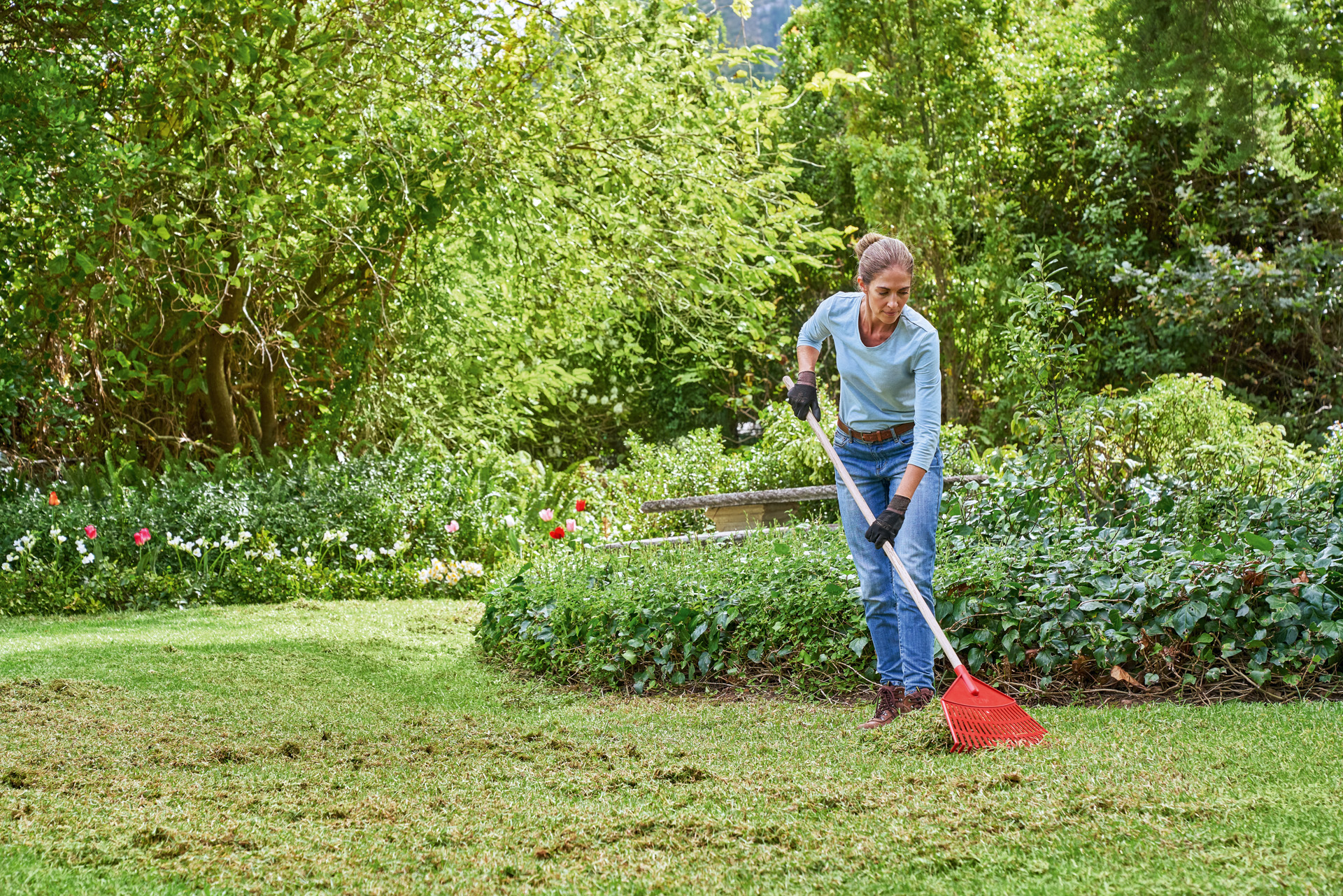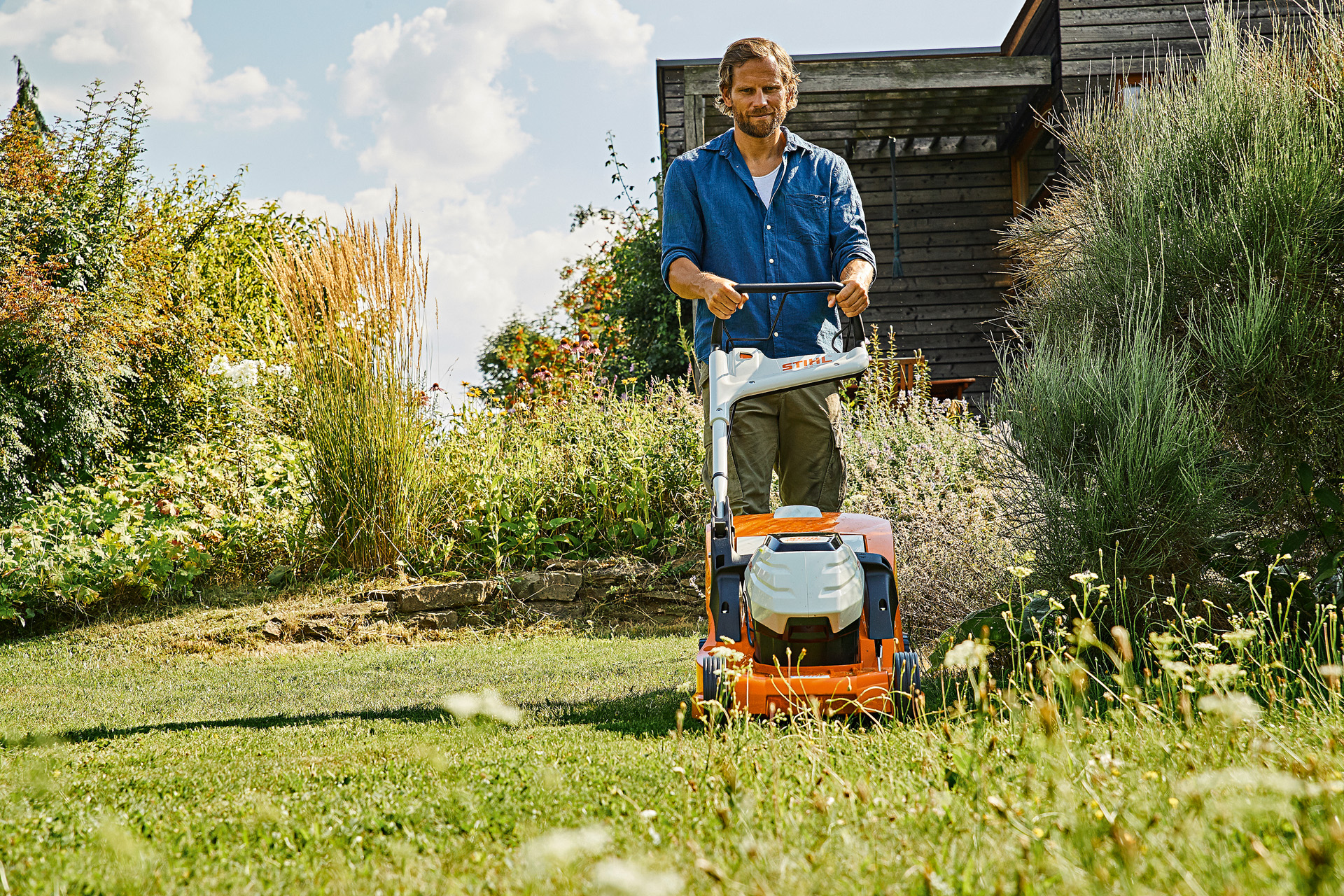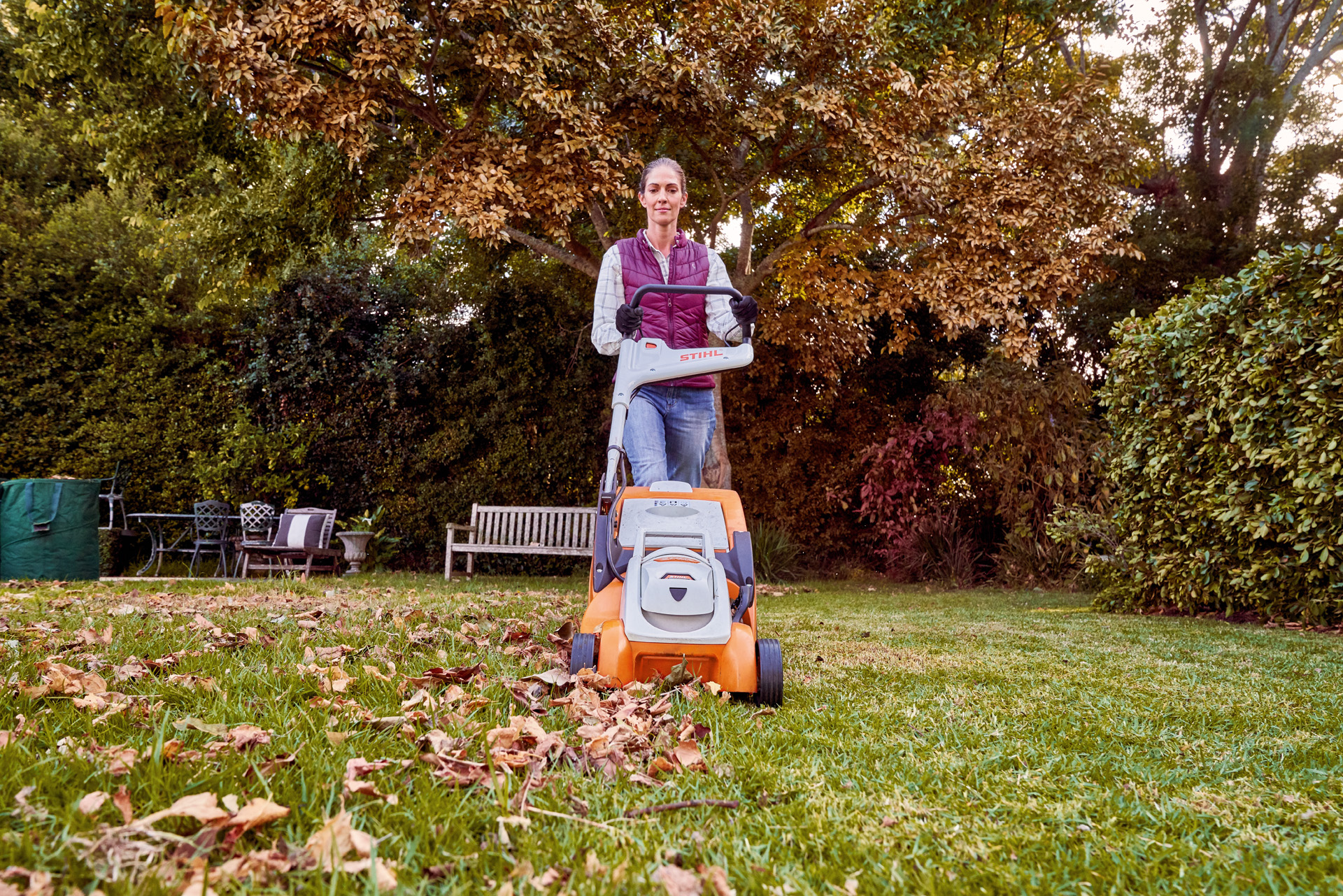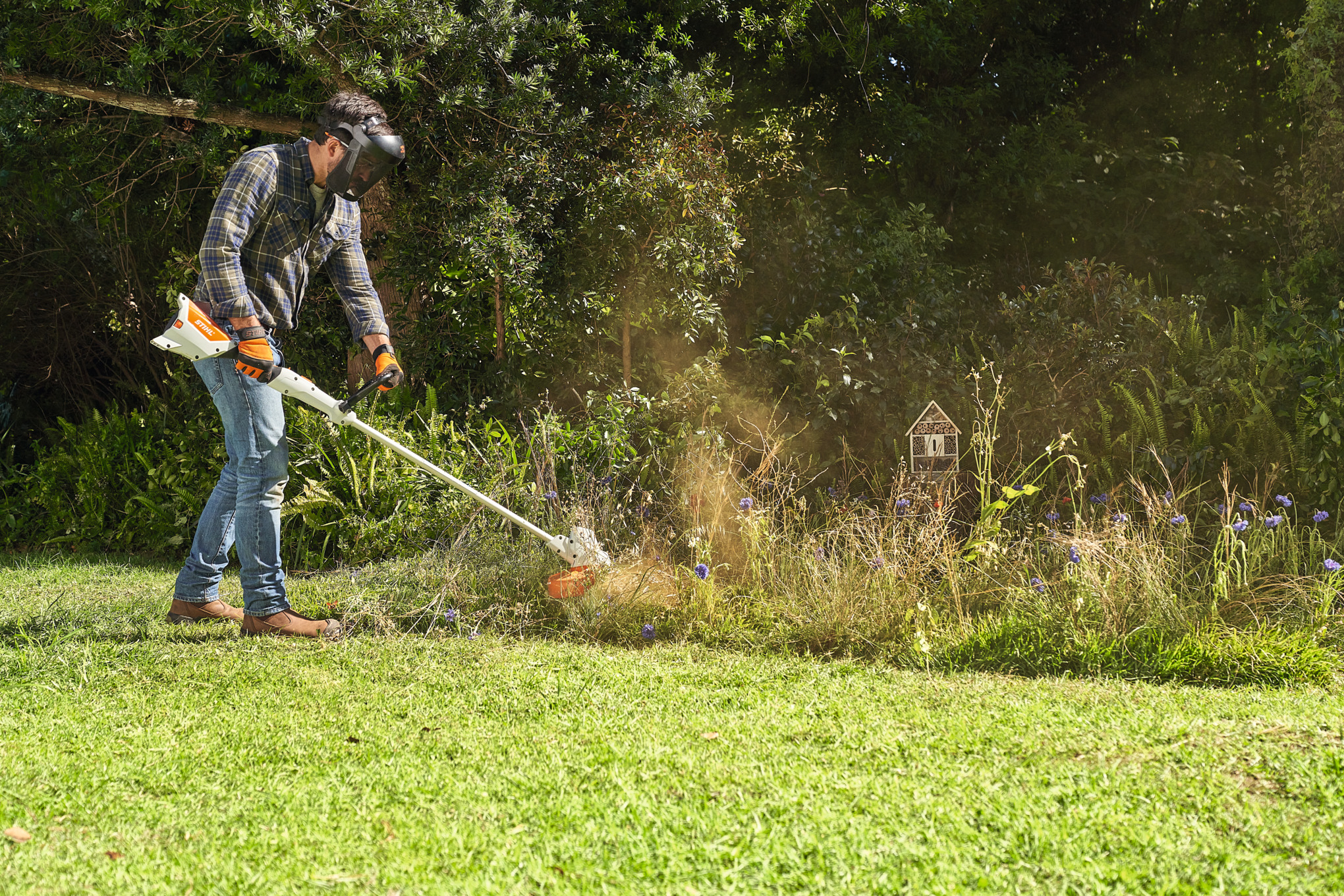Lawn care in winter
Your lawn essentially sleeps through the coldest months, but if you want the best spring display don’t overlook a little winter lawn care.
18.09.2023

Let your lawn rest for winter
Your garden winds down in the winter months, as an important part of its natural cycle. The grass in your lawn will respond to falling temperatures and will stop growing as light levels fall. As the plants save their energy, your lawn and garden care routine also requires less effort from you. But you should remember that while your lawn is resting it is also not able to defend itself against stresses and damage. That’s why the most important element of winter lawn care is letting it rest: avoid walking on the grass in the depths of winter, to prevent damage that will become apparent when the growing season starts again.
To prepare for winter dormancy, make sure you complete the usual active lawn care tasks by the first winter frost at the latest – usually around the end of October, but check your local conditions. That means collecting up leaves, scarifying your lawn if necessary, giving it a last mow and applying a slow-release winter lawn feed.
Winter lawn care: mowing Once the first frost of the season arrives, the time for lawn mowing is over. Your grass should also not be too short as it goes into winter: aim for it to be 4 to 5 cm long after the last mowing of the year. Your lawn needs to rest during the coldest months so you should avoid treading on it as far as possible – each step damages the delicate grass.

Winter lawn care: frost and snow
The reason your lawn is so sensitive to winter damage is that grass is up to 80% water, and when that water turns to ice the blades can no longer bend and flex – instead they are liable to snap. And because the grass is dormant it can’t recover or repair the damage, which has consequences that will be evident as soon as winter is over: you’ll see yellowish-brown footprints and large brown areas infested with fungal diseases, such as snow mould and rot.
When you can see the sparkle of frost on your lawn, the grass is in a particularly delicate phase and you must especially take care not to walk on it. Winter snow, on the other hand, can actually have a protective function for your lawn, as a layer of it will insulate against frost and icy winds. However long the snow remains, you should generally take care not to disturb it or walk on it.
Lawn types in winter
Grass seed and turf are sold under different descriptions with different care needs, so to ensure that your lawn stays looking beautiful all year round and is not subjected to unnecessary stresses, you should think about which type of lawn suits your needs right from the outset. Keeping young children off a snowy garden is close to impossible, so a family lawn should use a resilient grass, for example.
More durable than an ornamental lawn in the winter, better able to withstand a snowball fight or two.
Very delicate; you should avoid stepping on it in winter as far as possible.
Durable, with a good root system. Resilient against the stresses of winter.
Crossing an ornamental lawn safely
Your ornamental lawn may well be the crowning glory of your garden in spring, as long as you take care of it in winter. In case you need to cross the lawn during its winter rest, it’s a good idea to put stepping stones in place at the start of the season; these decorative paths look fantastic, and also help to preserve the lawn and keep your shoes dry in the snow and rain.
Lawn care as winter ends
Your lawn care schedule should start again in earnest as soon as the frosts are over. We recommend that you apply a nitrogen-based lawn fertiliser to stimulate growth – and remember, the more stress the lawn faces over winter, the more nutrients it will need as the growing season starts.
Winter lawn repair
If you’ve had a particularly harsh winter, your lawn may need special end-of-winter lawn treatment and extra care as soon as the last snow melts.
- Use a rake to clear the lawn and remove any leaves and branches.
- Mow the lawn if the ground is dry.
- If you can see dead or diseased patches of lawn, we recommend scarifying it.
- As a final lawn care step, apply a specially formulated spring lawn feed.
When should I mow for the first time after winter? When exactly to mow your lawn after winter depends on the height of the grass, but you should wait until temperatures have settled at around 7 to 10°C. This is likely to be around mid-March to the start of April.
Summary: lawn care in winter
- Have you already had the first frost of the winter? Then don’t mow your lawn again
- Take care to avoid stepping on the grass during winter – consider using stepping stones
- Do not clear snow off your lawn, as it help to protect the grass
- As soon as the snow has melted, you can start your lawn care routine again




